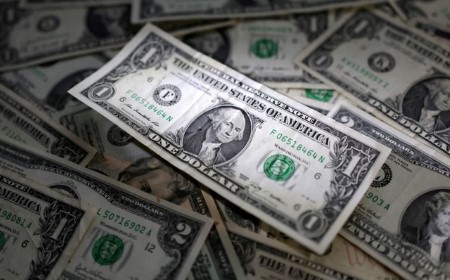




Policy Rate Updates: Double cut finale
 DOWNLOAD
DOWNLOAD

Monthly Economic Update: One for the road
 DOWNLOAD
DOWNLOAD

Inflation Update: Still low, still slow
 DOWNLOAD
DOWNLOAD


Yields fall as Fed officials cite inflation progress

US Treasury yields fell to a four-month low on Wednesday after top Federal Reserve officials cited progress in inflation easing closer to their 2% target, setting the stage for a likely first interest rate cut in September.
A July rate cut, however, was seen as an even more remote prospect after the officials, including New York Fed President John Williams, also said that they wanted to see further improvement.
“This commentary that they’re doing today is like look, don’t expect any (cut in) July, that takes that off the table,” said Matt Eagan, head of the full discretion team at Loomis, Sayles and Company in Boston.
The odds of a rate cut at the Fed’s July 30-31 meeting slipped to 5%, from around 8% on Tuesday, according to the CME Group’s FedWatch Tool. A rate reduction by September is seen as certain, with a second cut or third cut by December also expected.
“The Fed is sticking with the messaging that it still wants to see more good data,” said Vail Hartman, US rates strategist at BMO Capital Markets in New York. “This did effectively take a July move off the table, but it is still leaving September very much a live meeting.”
Softer jobs data and easing inflation in recent weeks have boosted the odds of an impending rate cut.
Benchmark 10-year yields fell 2 basis points to 4.146%, the lowest since March 13.
Two-year yields dipped 1.6 basis points to 4.43%.
Repositioning for a potential victory by Donald Trump at November’s US presidential election continued to ebb on Wednesday.
Trump’s odds of winning the presidency increased after he survived an assassination attempt on Saturday. Online betting site PredictIt showed bets of an election win at 67 cents for Trump, up from Friday’s 60 cents, with a victory for Joe Biden at 28 cents.
Analysts say that a Trump presidency could reignite inflation as a result of more pro-business policies, tax cuts, and tariffs.
That sent longer-dated yields higher on Monday and caused a sharp steepening in the Treasury yield curve.
“The steepener has been a very crowded trade,” said Eagan, referring to traders buying shorter-dated debt and selling longer-dated Treasuries.
After Monday’s move the steepening has reversed on what was likely profit-taking, he said.
Longer-dated yields are expected to become more elevated relative to shorter-dated ones as the US budget deficit worsens, which is expected under a Trump or Biden presidency and will increase Treasury supply.
“No matter which candidate wins there‘s going to be a heck of a lot more Treasuries that need to clear the market,” said Eagan.
Shorter-dated Treasuries are expected to perform relatively better as the Fed cuts rates.
The inversion in the closely watched two-year, 10-year Treasury yield curve widened to minus 29 basis points after reaching minus 22 basis points on Monday, the smallest inversion since January.
The gap between two-year and 30-year yields was at minus 7 basis points, after turning positive on Monday for the first time since January.
The Treasury saw solid demand for a USD 13 billion sale of 20-year bonds on Wednesday, which sold at a high yield of 4.466%, close to where they had traded before the auction. Demand was 2.68 times the amount of debt on offer.
The US government will also sell USD 19 billion in 10-year Treasury Inflation-Protected Securities (TIPS) on Thursday.
(Reporting By Karen Brettell; editing by Philippa Fletcher and Nick Zieminski)
This article originally appeared on reuters.com





 By Reuters
By Reuters